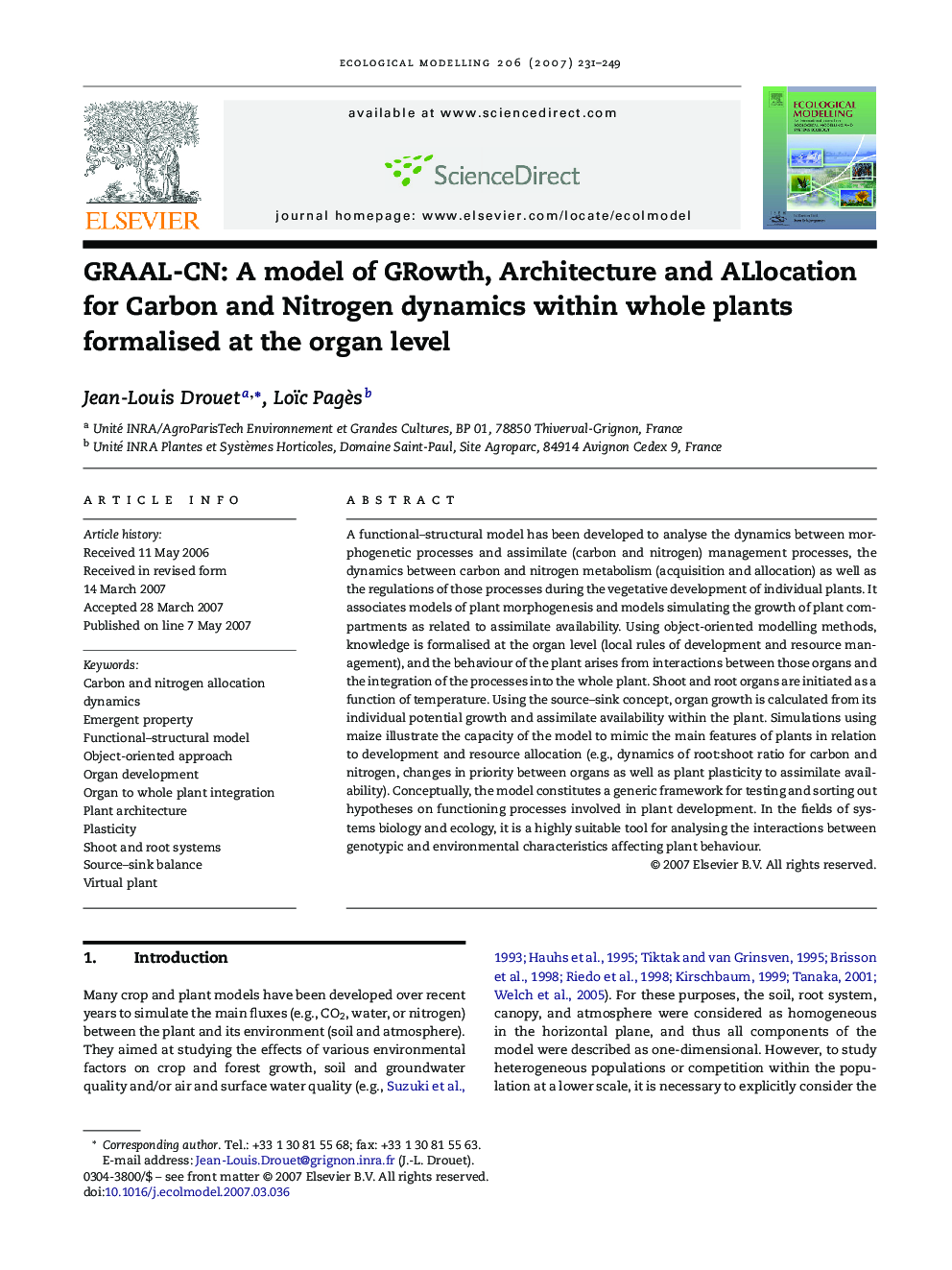| Article ID | Journal | Published Year | Pages | File Type |
|---|---|---|---|---|
| 4378639 | Ecological Modelling | 2007 | 19 Pages |
A functional–structural model has been developed to analyse the dynamics between morphogenetic processes and assimilate (carbon and nitrogen) management processes, the dynamics between carbon and nitrogen metabolism (acquisition and allocation) as well as the regulations of those processes during the vegetative development of individual plants. It associates models of plant morphogenesis and models simulating the growth of plant compartments as related to assimilate availability. Using object-oriented modelling methods, knowledge is formalised at the organ level (local rules of development and resource management), and the behaviour of the plant arises from interactions between those organs and the integration of the processes into the whole plant. Shoot and root organs are initiated as a function of temperature. Using the source–sink concept, organ growth is calculated from its individual potential growth and assimilate availability within the plant. Simulations using maize illustrate the capacity of the model to mimic the main features of plants in relation to development and resource allocation (e.g., dynamics of root:shoot ratio for carbon and nitrogen, changes in priority between organs as well as plant plasticity to assimilate availability). Conceptually, the model constitutes a generic framework for testing and sorting out hypotheses on functioning processes involved in plant development. In the fields of systems biology and ecology, it is a highly suitable tool for analysing the interactions between genotypic and environmental characteristics affecting plant behaviour.
